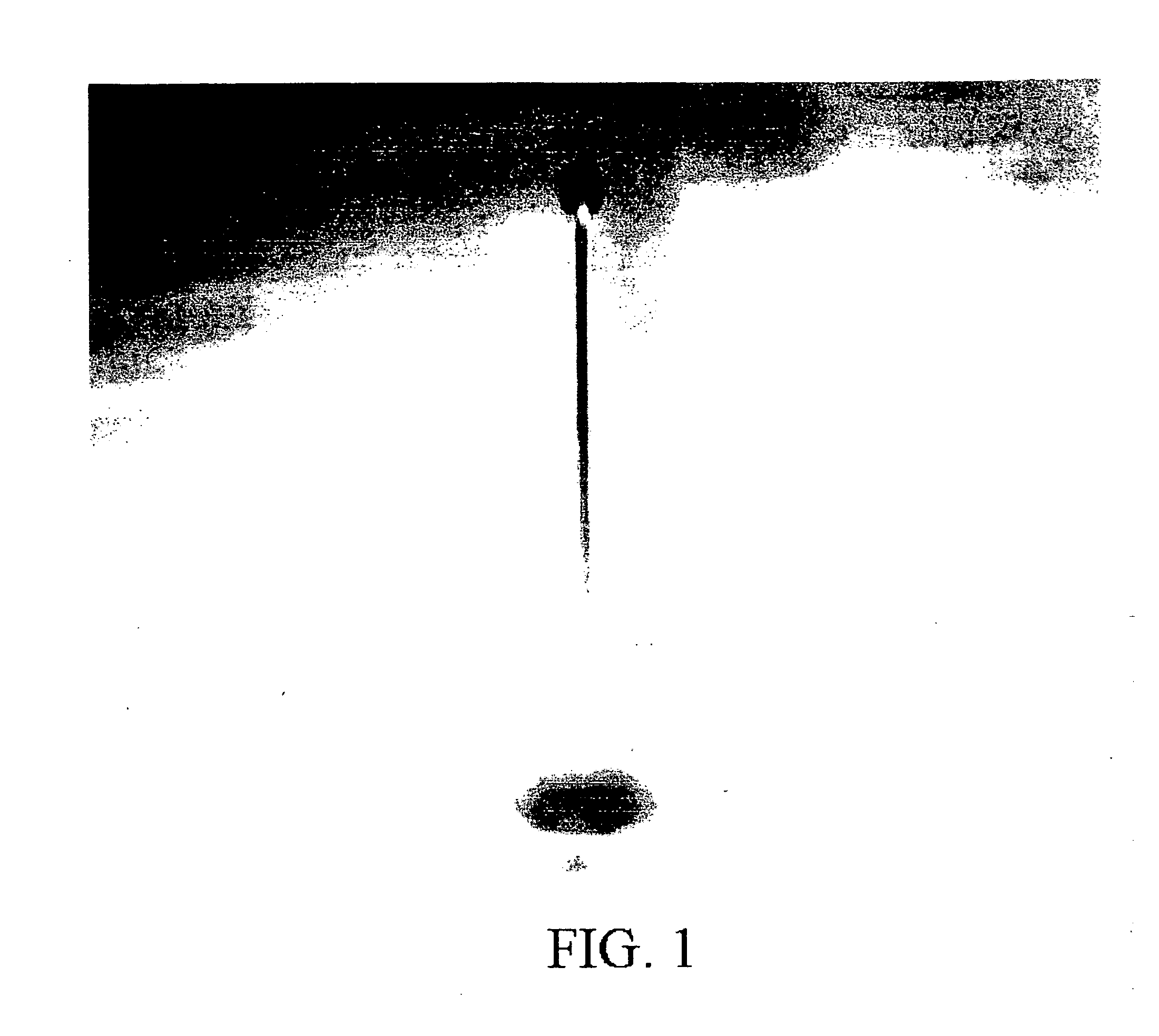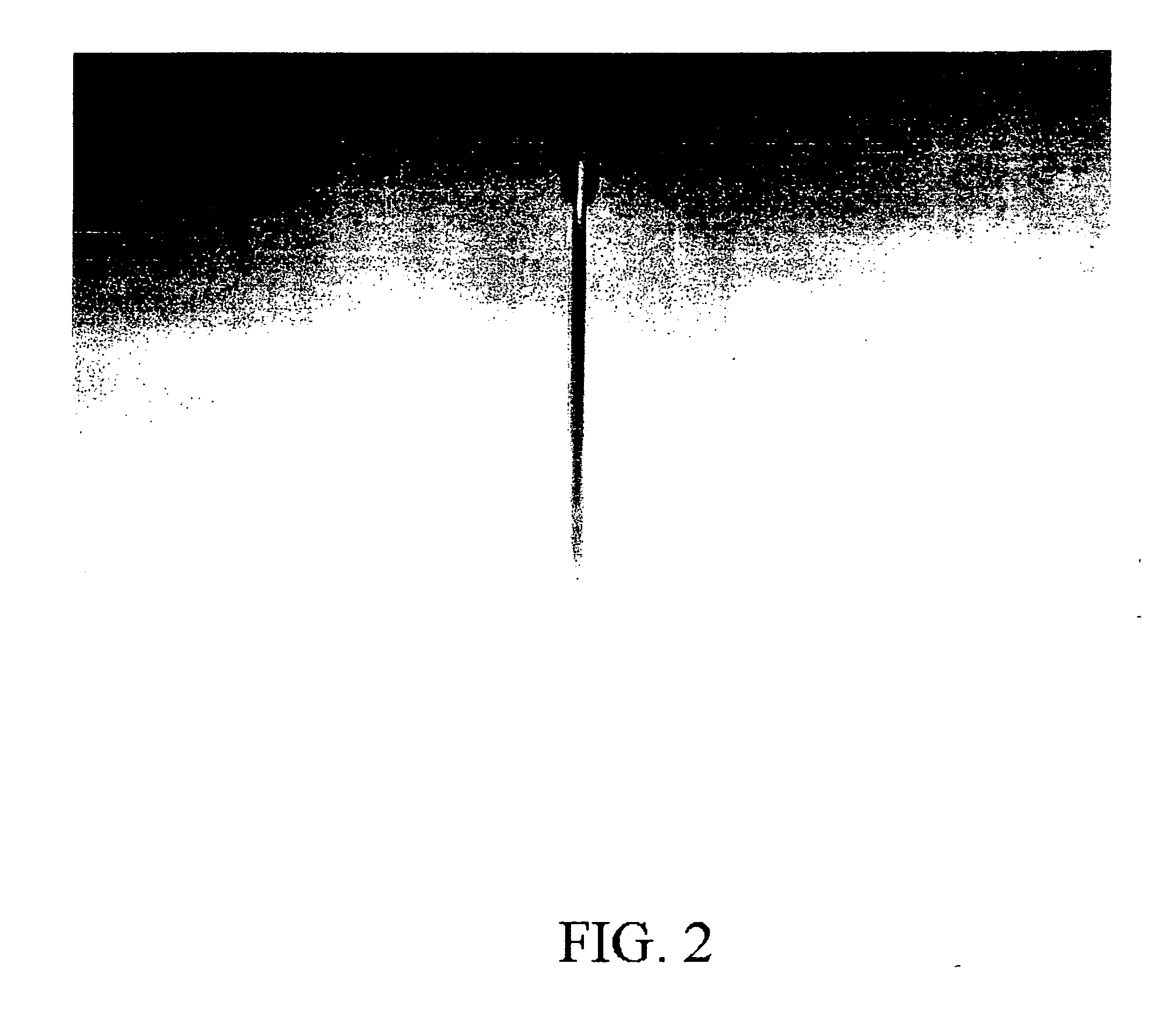Photocurable pigment type inkjet ink composition
- Summary
- Abstract
- Description
- Claims
- Application Information
AI Technical Summary
Benefits of technology
Problems solved by technology
Method used
Image
Examples
example 1
Using a Reactive Surfactant as an Emulsifier for the Photocurable Resin and Photoinitiator
[0021] 33 g of a red pigment (Pigment Red 254), 9.9 g of a non-reactive pigment dispersant (Sinonate 9620P from Sino-Japan Chemical Co. Ltd.), 9.9 g of styrene / acrylic acid block copolymer dispersant (ST / AA=1 / 1, molecular weight is about 3200), 167.2 g of water, and 644 g of glass milling beads were added and milled for 10 hours. After filtration, a pigment concentrate DBR006 with 8.6% solid content was prepared. The surface tension measured by Kruss K7 was 46.5 mN / m, the viscosity determined by Brook Field DVII was 3.02 cps, and the pigment average particle size determined by Malvern Particle Sizer was 69.7 nanometers.
[0022] 2-hydroxy-2-methyl-1-phenyl-propan-1-one (photoinitiator, 1.8 weight parts), polyethylene glycol (200) diacrylate (photocurable compound, 20 weight parts), and ethoxylated (9) trimethylolpropane (photocurable compound, 1.5 weight parts) were stirred for 10 minutes. 2-pyr...
example 2
Using a Reactive Surfactant as an Emulsifier for the Photocurable Resin and Photoinitiator
[0038] 2-hydroxy-2-methyl-1-phenyl-propan-1-one (photoinitiator, 1.8 weight parts), polyethylene glycol (200) diacrylate (photocurable compound, 20 weight parts), and ethoxylated (9) trimethylolpropane (photocurable compound, 1.5 weight parts) were stirred for 10 minutes. 2-pyrrolidone (co-solvent, 5 weight parts) and reactive surfactant polyoxyethylene allyl nonylphenol sulfonate (5 weight parts, from HSIN SOU Chemical Co., Ltd.) as an emulsifier were then added and stirred for 10 minutes. 50 weight parts of water was then added and stirred at 5000 rpm for 5 minutes. The reaction mixture was held still until bubbles disappeared. The red pigment concentrate DBR006 (15 weight parts) prepared from Example 1 was then added and stirred for 15 minutes to obtain a photocurable inkjet ink.
[0039] The above ink was charged in a HP51626 ink cartridge and printed on a glass with a HP420 inkjet printer. ...
example 3
Using a Reactive Dispersant for Pigment Grinding
[0041] 27.75 g of a red pigment (Pigment Red 254), 12.3 g of a reactive dispersant bis(polyoxyethylene polyphenyl ether) methacryl sulfate ammonium (from Sino-Japan Chemical Co. Ltd.), 299 g of glass milling beads, and 146 g of water were moistened, milled for 10 hours, and filtered, obtaining a pigment concentrate NDR004 with 11.11% solid content. Physical properties: pH=7.56, viscosity=2.91 cps, surface tension=42.5 mN / m, average particle size=65.4 nanometers.
[0042] 2-hydroxy-2-methyl-1-phenyl-propan-1-one (photoinitiator, 1.8 weight parts), polyethylene glycol (200) diacrylate (photocurable compound, 20 weight parts), and ethoxylated (9) trimethylolpropane (photocurable compound, 1.5 weight parts) were stirred for 10 minutes. A non-reactive emulsifier and 2-pyrrolidone (co-solvent, 5 weight parts) were then added and stirred for 10 minutes. 50 weight parts of water was then added and stirred at 5000 rpm for 5 minutes. The reaction...
PUM
| Property | Measurement | Unit |
|---|---|---|
| Surface tension | aaaaa | aaaaa |
| Surface tension | aaaaa | aaaaa |
| Photocurable | aaaaa | aaaaa |
Abstract
Description
Claims
Application Information
 Login to View More
Login to View More - R&D
- Intellectual Property
- Life Sciences
- Materials
- Tech Scout
- Unparalleled Data Quality
- Higher Quality Content
- 60% Fewer Hallucinations
Browse by: Latest US Patents, China's latest patents, Technical Efficacy Thesaurus, Application Domain, Technology Topic, Popular Technical Reports.
© 2025 PatSnap. All rights reserved.Legal|Privacy policy|Modern Slavery Act Transparency Statement|Sitemap|About US| Contact US: help@patsnap.com


